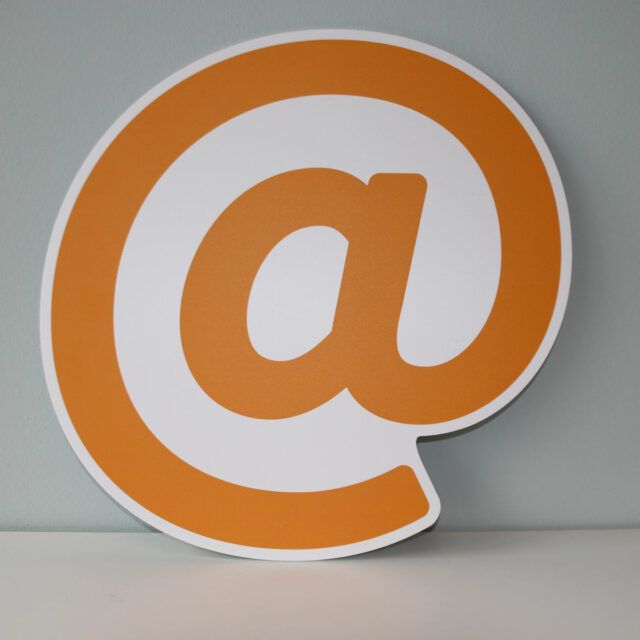Email marketing is king, and you can leverage its power to send surveys to your customers. Let’s look at the five benefits of sending surveys via email.
survey responses
3 Tips for Executing a Flawless Email Survey Campaign
Survey Tips
Email marketing is here to stay.
Nearly all of your customers use email. In fact, they gave you their email address so you could contact them.
They’ve invited you into their email box, and it’s up to you to use it. We encourage you to harness the power of email marketing for your surveys.
In this article, we look at three tips for executing a flawless email survey campaign.
#1: Send a “Pre” Invitation
To get better survey results, send your customers an email before you email them the survey.
Use this chance to let your customers know the survey is coming. This is the first invitation to complete it.
In this initial email, tell them what you’re going to do with the feedback. Explain to them why you need their information. Let them know that their feedback is beneficial to you, and that you’re going to use their responses to make your products and services better.
You also can tell them in the pre-invitation how long the survey will take to complete.
Many businesses find that by sending this initial email it increases email open rates and survey completion rates.
This is your “second” ask and by giving your customers an invitation, they will be looking for your survey and more ready to complete it.
#2: Create a Creative Announcement
Now it’s time to craft the email that includes your survey link. This is the short amount of text you use to persuade your customers to actually click on the link and take your survey.
A few rules of thumb to get the most opens on your survey email include the following:
- Personalize your email. You can personalize the subject line of your email and in the body of the email. Your email service provider allows you to personalize your emails, and this will get you more opens.
- Use very short, descriptive text. Break it up into short paragraphs of no more than two sentences.
- Tell your respondents very quickly why they should complete the survey and what they will get for doing it.
- Tell customers how long the survey will take.
- Thank them for participating. You really want to recognize they are taking their own time to complete your survey.
#3: Send a Reminder
You’ve sent the pre-invitation, and you’ve sent the survey.
After no more than one week’s time and at least three days after the survey email, you can send reminders to your customers.
Be careful and don’t send reminders to people who’ve already completed it. You should be able to do this through your email service provider.
Many respondents will need this third reminder especially if they’re busy. They also might not have seen your survey email, so this is a gentle reminder.
Final Thoughts
Using email marketing to execute a flawless email survey campaign is a great way to get more responses from your respondents. (tweet this)
You’ve been invited into your customer’s inboxes, and they expect your emails.
You’ll find they are also willing to finish your survey.
Finally, don’t forget to send a thank you to all of your customers who completed your survey.
If you’re giving them something for finishing your survey, this email might serve as the link to their bonus or gift. Or you might use this email to tell them how to get their gift for finishing your survey.
Begin and end this email with a thank you. This is the last email reference to your survey. If you ever want to send your customers another survey, you want to over thank them, so they feel valued for helping you.
Surveys can help you get valuable customer feedback. You can then use this feedback to improve your business. Are you ready to get started with your Survey Town account? Start with your account today.
Image: Melinda Gimpel on Unsplash
How to Analyze Survey Results to Identify Improvements
Survey Tips
Sending surveys to your customers means so much more than simply crafting questions and sending them out. Your surveys provide you a wealth of information that you can then use to make decisions and changes at your business.
What you do with those survey results is important to your overall success.
In this article, we look at how to analyze survey results to identify improvements.
Study Your Data
Your first step is to analyze the data. Look for your respondent’s answers and compile them in an organized fashion.
Filter your data and separate it so you can analyze the results and then move forward with your own conclusions.
Only once you’ve analyzed and compiled that data can you make conclusions and ultimately a plan of action for improvements.
Present Your Results
When working with your team to identify ways to improve your business, you want to think about your presentation.
There are a few ways to look at your results with your staff:
- Create a chart or a graph. These are easy on the eyes and great for your visual team. Charts and graphs can help your team identify ways to make your business better in a way that is straightforward and easy to understand.
- Create a data table when your information is numerical. This is also easy for team members to gather information.
- Make an infographic. This is another great tool for visual team members. Your staff can easily digest the results so you can get started identifying improvements.
Final Thoughts
The most important thing you can do with your survey data is analyze it, report it, and then act on it.
When you identify improvements, you can work with your staff to make any needed changes so your next survey comes back with very positive results. (tweet this)
Bottom line: analyzing your survey analytics helps you understand your customers so you can improve your products and services.
Surveys can help you get valuable customer feedback. You can then use this feedback to improve your business. Are you ready to get started with your Survey Town account? Start with your account today.
Image: Scott Graham on Unsplash
Creative Ways to Share Your Survey with Customers
Survey Tips
You want people to complete your survey, so you want to make it something they want to do. Here are some creative ways to share your survey with customers.
Should You Reward Customers for Filling Out Your Survey?
Survey Tips
You want more survey respondents. Sometimes people recommend incentives. So, should you reward your customers for filling out your survey?
What Clarifies a Leading Question and How to Avoid Them
Survey Tips
To get the most relevant data from your survey, you want to ask the right questions. Let’s look at what clarifies a leading question and how to avoid them.
7 Tips for Creating Meaningful Questions
Survey Tips
You’ve got questions, and you need answers. This may be questions about your products, customer service, or new offerings.
You want to pose these questions to your customers, but you aren’t quite sure how to do it. In comes the survey.
While many think you can just throw a few questions together, it’s important that you create questions that will provide you with valuable data. Ask the wrong questions, and you won’t see the right answers.
In this article, we look at seven tips for creating meaningful questions, so you get good feedback.
#1: Make a Plan
The best surveys start with a plan. Before you sit down to create your questions, you first want a plan, so you have actionable results.
The first thing to ask yourself is what you want to learn. Here are some things to get you thinking:
- What is the purpose of your survey?
- What will you do with the results?
- What to do you need to know to take action?
#2: Have a Focus
When you make a plan, you’re better able to spot your focus. The most successful surveys have no more than one or two focus points. (tweet this)
In other words, you don’t want to ask too many varied questions. Why? Your survey won’t be as meaningful, and you’ll have more survey dropouts.
What’s more, if you have too many topics, you’ll have too much data to take action on.
#3: Make Your Survey Simple
Don’t confuse your respondents. The most meaningful surveys are short and to the point.
When it comes to wording, make the words short and easy to understand. You don’t want respondents getting out their dictionaries.
Use words that mean only one thing. Don’t leave room for any interpretation. Avoid slang.
Include only one thought per sentence. Don’t be biased and avoid all negative contractions.
#4: Make Your Survey Short
Longer surveys have a lot of drop out. So, keep your survey to one-five questions for the best, most meaningful results.
#5: Have an Order to Your Questions
When survey makers place questions out of order, it’s confusing for your respondents.
Keep survey questions in order and in context. For example, you can start with broad questions about your topic and then move on to more specific ones. Make sure your questions build on one another to increase your relevant data.
This is the funnel approach, and it makes it easier for your customers to work through your survey.
#6: Analyze Your Questions
Do be sure to analyze your questions.
For example, if you are asking a yes or no question, does it really work? These are easy questions for people, but are they really meaningful? Most often, only for data points.
For long survey questions, you want to go back and make sure you can’t split them in two. If you can, please do it. There should only be one topic per question.
#7: Be Timely
When sending surveys be timely. For example, if you’re sending a survey after a customer service touchpoint, it should be sent immediately, not four days later.
It’s hard for respondents to accurate complete your survey and give you meaningful data if too much time as lapsed.
To Conclude
Finally, surveys with the most meaningful results are tested by several people before they are sent out.
First, testing keeps you from having typos in your survey. Next, testing lets you know how long it takes users to complete your survey. And ultimately it lets you know if your survey makes sense.
Have your colleagues, friends, and family take your survey before you send it out. You might be surprised what they find.
The best surveys have meaningful questions that provide data you can act on. Use the tips here to create better surveys with even better results.
Surveys help you make the best decisions for your business. Are you ready to get started with your free Survey Town trial? Start with your free account today, and you can upgrade at any time.
3 Questions to Drastically Improve Your Restaurant Quickly
Survey Tips
Finding out what your customers think is important to implementing change. Let’s look at the three questions to drastically improve your restaurant quickly.








